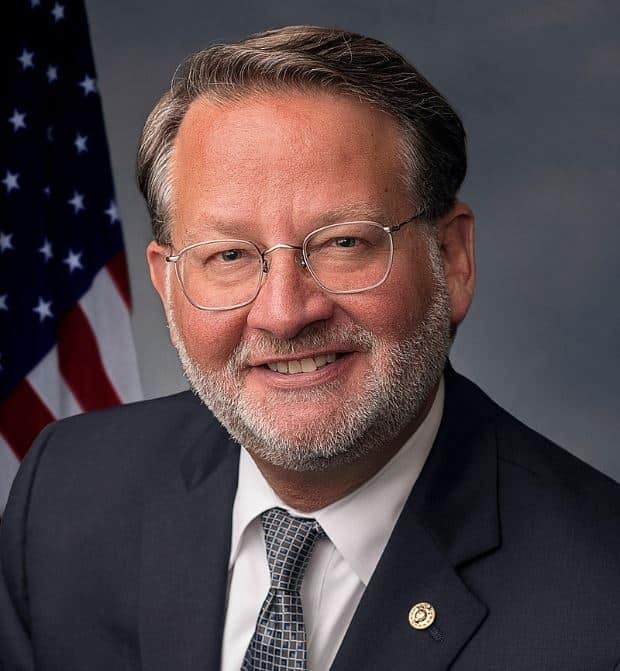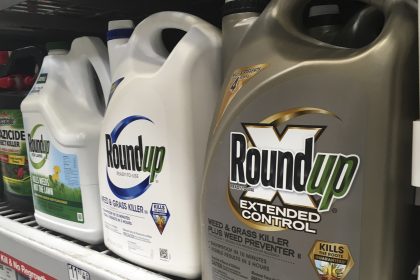Peters Drives Efforts to Clean Up Michigan’s Forever Chemicals

EAST LANSING, Mich. — Sen. Gary Peters, D-Mich., who serves as chairman of the U.S. Senate Committee on Homeland Security and Governmental Affairs, is taking new actions to hold Michigan polluters accountable for contaminating the environment with per- and polyfluoroalkyl substances, or PFAS, which are a class of toxic chemicals found in food packaging and other common commercial products that can cause severe health problems.
“Michigan has the highest amount of reported PFAS contamination sites in the entire country … partly because Michigan is on the forefront of identifying these locations and actually looking for them,” said Peters, during a field hearing held by the committee on Monday at Michigan State University.
“For the last 80 years, they’ve been allowed to seep into our air, our soil, and even our drinking water. Prolonged exposure to these toxic chemicals can lead to serious health effects like cancer … or reproductive and developmental issues,” continued Peters.
Peters said that, to-date, more than 2 million Michigan residents have been exposed to toxic chemicals in their drinking water.
“In particular, service members and first responders,” said Peters.
Across the U.S., there are an estimated 2,854 locations which have documented some form of PFAS contamination, but not all the contamination exceeds the levels in health advisories.
An inspector general report released in July 2021 by the Department of Defense found that the DoD has continued to use these chemicals despite knowing the harmful effects.
The same year that the IG report was released, the Environmental Protection Agency pushed to set new drinking water advisory limits through a PFAS strategic roadmap.
The roadmap from the EPA lays out a timeline from 2021-2024 for steps the agency will take to control PFAS at the source, ensure science-based decision making, and address the impact on disadvantaged communities.
Key action items in the roadmap include establishing a primary drinking water standard, a national PFAS testing strategy, and listing PFAS chemicals under the Comprehensive Environmental Response, Compensation, and Liability Act, which provides a federal superfund to clean up uncontrolled or abandoned hazardous-waste sites.
Peters previously secured provisions in the 2019 defense bill to ban the DoD from purchasing firefighting foams with PFAS chemicals.
In February of this year, Peters further led a legislative effort known as the Preventing PFAS Runoff at Airports Act, S.3662, to incentivize commercial airports nationwide to purchase testing equipment that avoids PFAS chemicals.
In June, he introduced the Federal PFAS Research Evaluation Act, S.4492, to get a better and more complete understanding of the impact of PFAS on health and environment.
“I will be introducing new legislation in the coming weeks to improve intergovernmental coordination for PFAS chemicals,” said Peters.
Patrick Breysse, who serves as director of the National Center for Environmental Health/Agency for Toxic Substances and Disease Registry at the Centers for Disease Control and Prevention, U.S. Department of Health and Human Services, said during the hearing that his team has been working in collaboration with the Environmental Protection Agency to develop a multisite health study which examines drinking water exposures and human health effects across the country.
“We go to the site and we look at where does the exposure come from, what are pathways it gets to people, what the health risks are, and how many people are exposed. We write a report trying to find that,” said Breysse.
“Michigan has been one of the sites that is most successful at recruiting people for that study. Unfortunately, we don’t have any results to share right now,” continued Breysse.
Breysse said that the science of PFAS is constantly evolving, and new guidance on exposure is being released all the time, which poses challenges in developing these types of nationwide studies.
He cited the difficulty in how to factor in the role of a new report released by the National Academy of Medicine on July 28, which calls for expanded PFAS testing for people with history of elevated exposure, and recommends that these patients receive regular screenings and monitoring, such as a blood test, to understand the health impacts of PFAS exposure.
“It’s quite remarkable actually how much is being published on PFAS every month. There are literally dozens of papers, if not more, every month,” said Breysse.
“Most of the data comes from studies in toxicology, in animals … the big need for PFAS is human epidemiology … so we can understand what we would call an exposure and response relationship. How much in the water, how much in the body, results in how much disease? That information can be used to more effectively set safe standards and safe levels [of PFAS] going forward,” continued Breysse.
Alexa can be reached at [email protected]

























